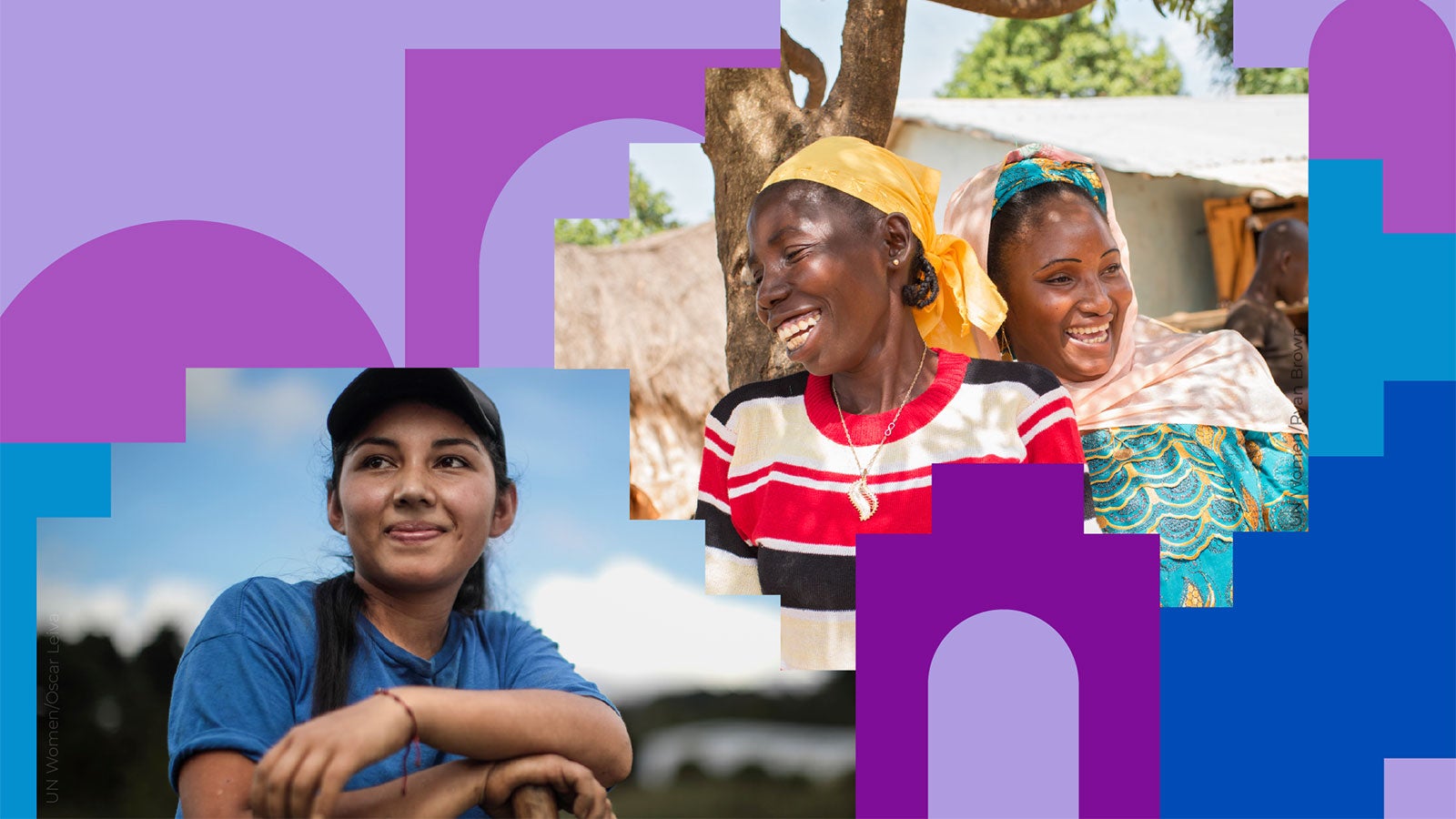1 in every 10 women in the world lives in extreme poverty | UN Women – Headquarters
1 in every 10 women in the world lives in extreme poverty UN Women


Climate Change and Persistent Poverty Gaps

Climate change is accelerating persistent poverty gaps. As competition for scarce resources intensifies, livelihoods are threatened, societies become more polarized, and women bear an increasingly heavy burden:
- 1 in every 10 women in the world lives in extreme poverty.
- The number of women and girls living in conflict-affected areas doubled since 2017, now, more than 614 million women and girls live in conflict-affected areas. In conflict areas, women are 7.7 times more likely to live in extreme poverty.
- Climate change is set to leave 236 million more women and girls hungry by 2030, twice as many as men (131 million).
- At prime working age, only 61 per cent of women are in the labour force versus 90 per cent of men.
The Importance of Sustainable Development Goals (SDGs)
We cannot continue to miss out on the gender-equality dividend. More than 100 million women and girls could be lifted out of poverty if governments prioritized education and family planning, fair and equal wages, and expanded social benefits.
Almost 300 million jobs could be created by 2035 through investments in care services, such as provision of daycare and elderly care. And closing gender employment gaps could boost gross domestic product per capita by 20 per cent across all regions.
The Need for Increased Investment
The current reality is far from this. Programmes dedicated to gender equality represent only 4 per cent of official development assistance. An additional USD 360 billion in developing countries is needed per year to achieve gender equality and women’s empowerment. This is less than one fifth of the USD 2.2 trillion spent globally on military expenditure in 2022, for example.
The areas needing investment are clear and understood. First and foremost there must be an investment in peace. Beyond this, the investments needed include: laws and policies that advance the rights of women and girls; transformation of social norms that pose barriers to gender equality; guaranteeing women’s access to land, property, health care, education, and decent work; and financing women’s groups networks at all levels.
Call to Action
UN Women is also calling on Member States at the Commission on the Status of Women, starting in New York on 11 March 2024, to back up their commitments on gender equality with resources. The world’s leaders have this opportunity to develop concrete and progressive agreed conclusions that reflect the crucial need for financing gender equality, women’s empowerment, and women´s organizations. They must seize it for the sake of equality, our planet, and the Sustainable Development Goals.
SDGs, Targets, and Indicators in the Article
| SDGs | Targets | Indicators |
|---|---|---|
| SDG 1: No Poverty | Target 1.1: By 2030, eradicate extreme poverty for all people everywhere, currently measured as people living on less than $1.25 a day | Indicator not mentioned in the article |
| SDG 5: Gender Equality | Target 5.1: End all forms of discrimination against all women and girls everywhere | Indicator not mentioned in the article |
| SDG 8: Decent Work and Economic Growth | Target 8.5: By 2030, achieve full and productive employment and decent work for all women and men, including for young people and persons with disabilities, and equal pay for work of equal value | Indicator not mentioned in the article |
| SDG 10: Reduced Inequalities | Target 10.4: Adopt policies, especially fiscal, wage, and social protection policies, and progressively achieve greater equality | Indicator not mentioned in the article |
| SDG 13: Climate Action | Target 13.1: Strengthen resilience and adaptive capacity to climate-related hazards and natural disasters in all countries | Indicator not mentioned in the article |
1. Which SDGs are addressed or connected to the issues highlighted in the article?
- SDG 1: No Poverty
- SDG 5: Gender Equality
- SDG 8: Decent Work and Economic Growth
- SDG 10: Reduced Inequalities
- SDG 13: Climate Action
2. What specific targets under those SDGs can be identified based on the article’s content?
- Target 1.1: By 2030, eradicate extreme poverty for all people everywhere, currently measured as people living on less than $1.25 a day (SDG 1)
- Target 5.1: End all forms of discrimination against all women and girls everywhere (SDG 5)
- Target 8.5: By 2030, achieve full and productive employment and decent work for all women and men, including for young people and persons with disabilities, and equal pay for work of equal value (SDG 8)
- Target 10.4: Adopt policies, especially fiscal, wage, and social protection policies, and progressively achieve greater equality (SDG 10)
- Target 13.1: Strengthen resilience and adaptive capacity to climate-related hazards and natural disasters in all countries (SDG 13)
3. Are there any indicators mentioned or implied in the article that can be used to measure progress towards the identified targets?
No, the article does not mention or imply any specific indicators that can be used to measure progress towards the identified targets.
SDGs, Targets, and Indicators
| SDGs | Targets | Indicators |
|---|---|---|
| SDG 1: No Poverty | Target 1.1: By 2030, eradicate extreme poverty for all people everywhere, currently measured as people living on less than $1.25 a day | Indicator not mentioned in the article |
| SDG 5: Gender Equality | Target 5.1: End all forms of discrimination against all women and girls everywhere | Indicator not mentioned in the article |
| SDG 8: Decent Work and Economic Growth | Target 8.5: By 2030, achieve full and productive employment and decent work for all women and men, including for young people and persons with disabilities, and equal pay for work of equal value | Indicator not mentioned in the article |
| SDG 10: Reduced Inequalities | Target 10.4: Adopt policies, especially fiscal, wage, and social protection policies, and progressively achieve greater equality | Indicator not mentioned in the article |
| SDG 13: Climate Action | Target 13.1: Strengthen resilience and adaptive capacity to climate-related hazards and natural disasters in all countries | Indicator not mentioned in the article |
Behold! This splendid article springs forth from the wellspring of knowledge, shaped by a wondrous proprietary AI technology that delved into a vast ocean of data, illuminating the path towards the Sustainable Development Goals. Remember that all rights are reserved by SDG Investors LLC, empowering us to champion progress together.
Source: unwomen.org

Join us, as fellow seekers of change, on a transformative journey at https://sdgtalks.ai/welcome, where you can become a member and actively contribute to shaping a brighter future.







